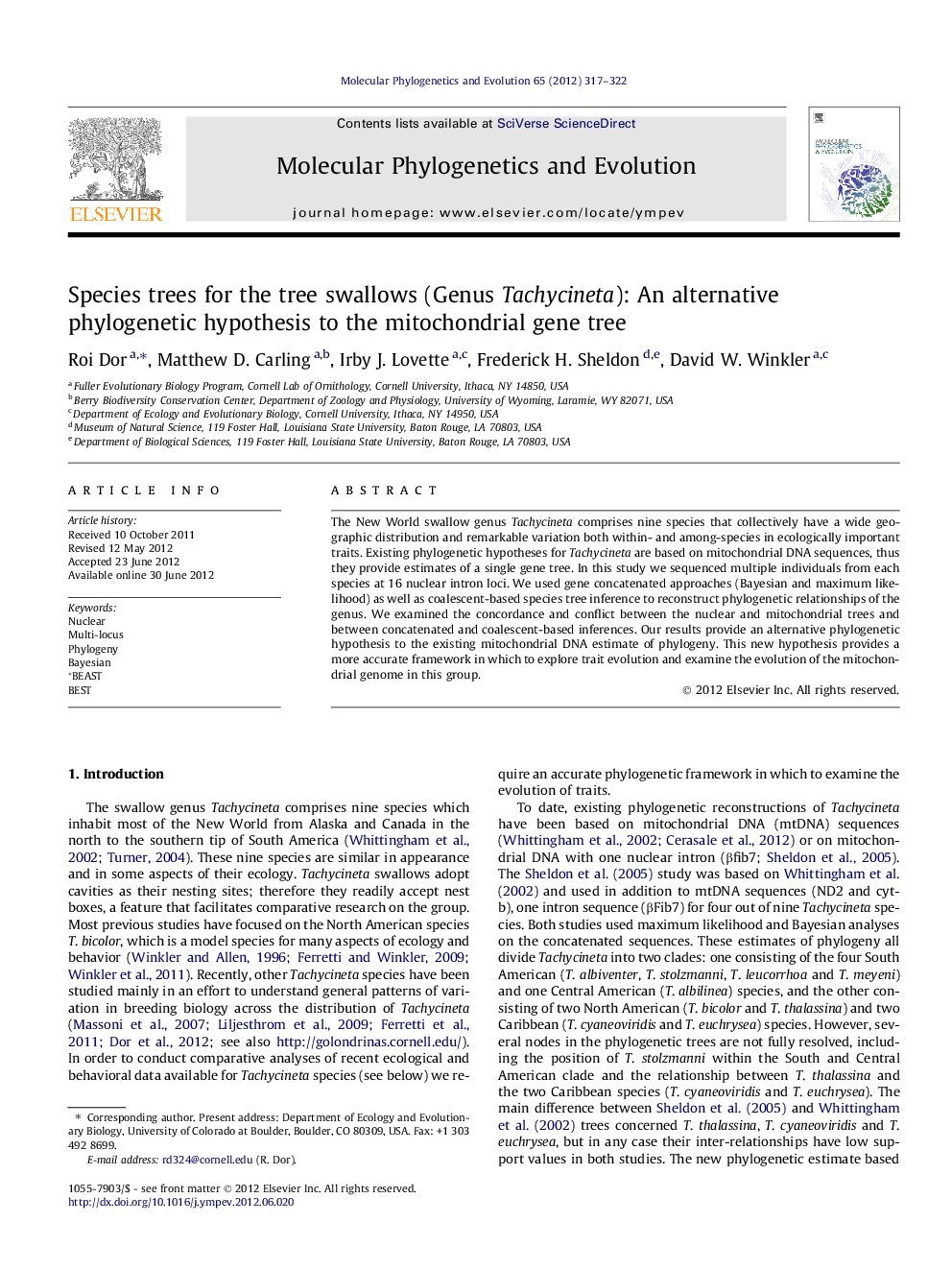| Article ID | Journal | Published Year | Pages | File Type |
|---|---|---|---|---|
| 5920269 | Molecular Phylogenetics and Evolution | 2012 | 6 Pages |
The New World swallow genus Tachycineta comprises nine species that collectively have a wide geographic distribution and remarkable variation both within- and among-species in ecologically important traits. Existing phylogenetic hypotheses for Tachycineta are based on mitochondrial DNA sequences, thus they provide estimates of a single gene tree. In this study we sequenced multiple individuals from each species at 16 nuclear intron loci. We used gene concatenated approaches (Bayesian and maximum likelihood) as well as coalescent-based species tree inference to reconstruct phylogenetic relationships of the genus. We examined the concordance and conflict between the nuclear and mitochondrial trees and between concatenated and coalescent-based inferences. Our results provide an alternative phylogenetic hypothesis to the existing mitochondrial DNA estimate of phylogeny. This new hypothesis provides a more accurate framework in which to explore trait evolution and examine the evolution of the mitochondrial genome in this group.
Graphical abstractDownload full-size imageHighlights⺠We present phylogenetic trees for Tachycineta swallows based on 16 nuclear loci. ⺠We analyzed concatenated sequences and gene tree combination methods. ⺠We examined the concordance and conflict between nDNA- and mtDNA-based trees. ⺠Our results provide an alternative phylogenetic hypothesis to existing mtDNA trees.
